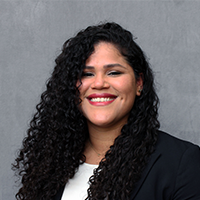Position: PhD Candidate
Current Institution: UW-Madison
Abstract: Multi-channel Deep Learning Networks as an Advanced Modeling Technique in Improving Epilepsy Workup
Epilepsy is the fourth most common neurological disease in the world characterized by unpredictable and recurrent seizures and is associated with significant cognitive and psychological effects and premature death. Most of the morbidity and mortality associated with epilepsy is found in the 1/3 of patients who are refractory to medications. Accurate epilepsy diagnosis and identification of patients at risk for resistance to medications is needed to render effective and timely treatment. However this remains a difficult task dependent on elective epilepsy monitoring unit admissions which can last days to weeks and are not readily available to many patients. The clinical workup of epilepsy is a multistep process that includes a detailed review of patient’s medical history physical and neurological examination electroencephalogram and neuroimaging data. Therefore the development of computational models capable of differentiating between seizure types and predicting clinical outcomes integrating all available clinical data would be an indispensable tool to improve the diagnosis and treatment process of these patients. In this preliminary study we utilized temporal lobe epilepsy (TLE) data- the most common medically refractory type of epilepsy in adults – to (1) demonstrate the potential of deep learning methods to analyze multimodal imaging data and (2) determine the power of multiple magnetic resonance image (MRI) datasets to provide an accurate TLE classification. Several multi-channel deep neural network (mDNN) models were trained validated and tested using brain structure metrics from structural MRI MRI-based region of interest correlation features and personal demographic and cognitive data (PDC). The results show that PDC individually offered the most accurate classification of TLE followed by its combination with MRI-based brain structure metrics. These findings demonstrate the potential of deep learning approaches such as mDNN models to combine multiple datasets for TLE classification.
Bio:
Maribel obtained a B.S. in electrical engineering from the University of Puerto Rico at Mayaguez in 2016. Later in 2018 she obtained a M.S. in biomedical engineering (BME) from UW-Madison. Currently she is a Ph.D. candidate in the BME department at UW-Madison and works in the Molecular Imaging / Magnetic Resonance Technology Lab. She is a NIH-funded Predoctoral TL1 Program Trainee and Graduate Engineering Research Scholar (GERS). Maribel’s area of expertise is neuroimaging and her thesis work focuses on the implementation of deep learning techniques to improve the workup of epilepsy. As part of the GERS community Maribel is an active member of the outreach committee which organizes activities that impact disadvantaged K12 and college students from underrepresented minority groups. As a Hispanic/Latino woman in engineering Maribel’s goal is to pursue high-level translational research in academia in the areas of signal/image processing and machine learning with an emphasis in neuroengineering.
